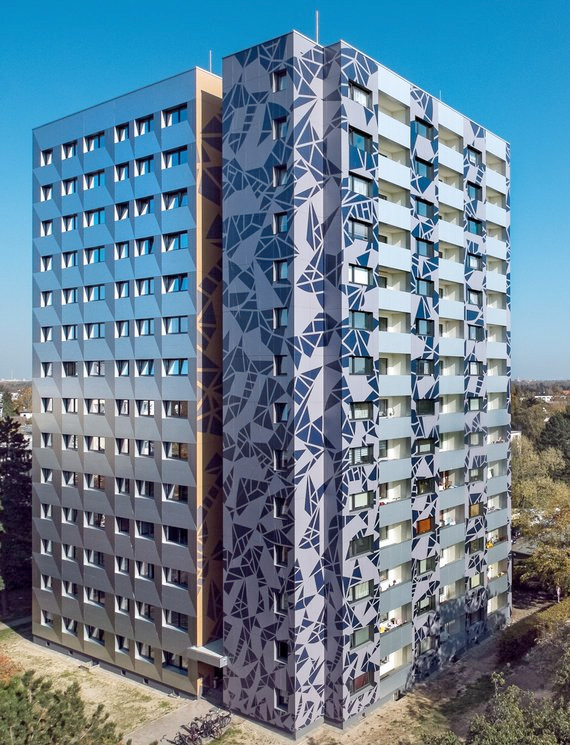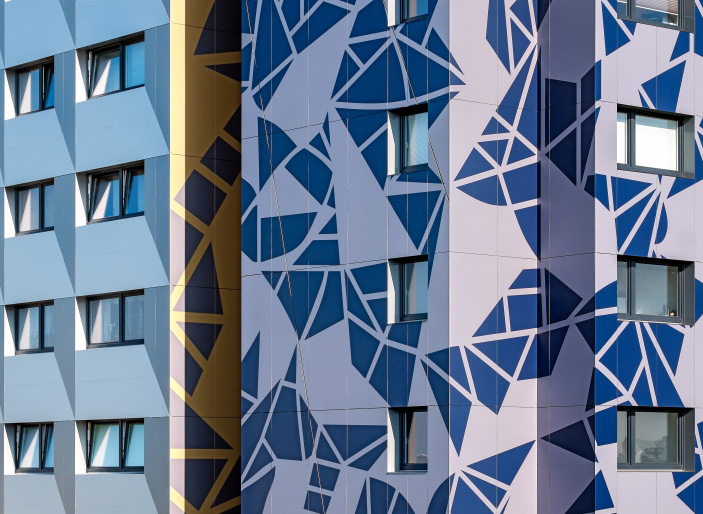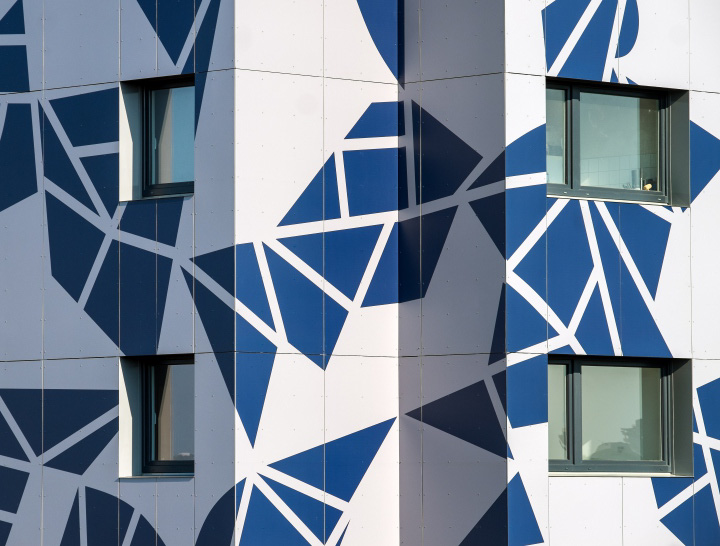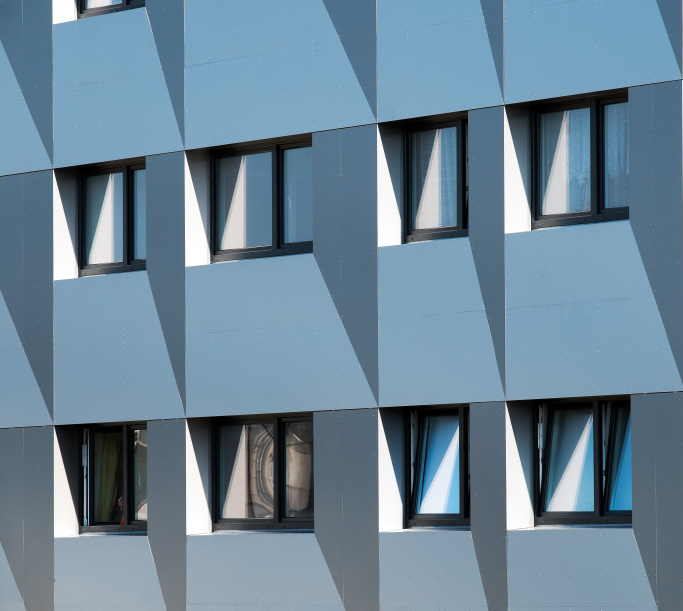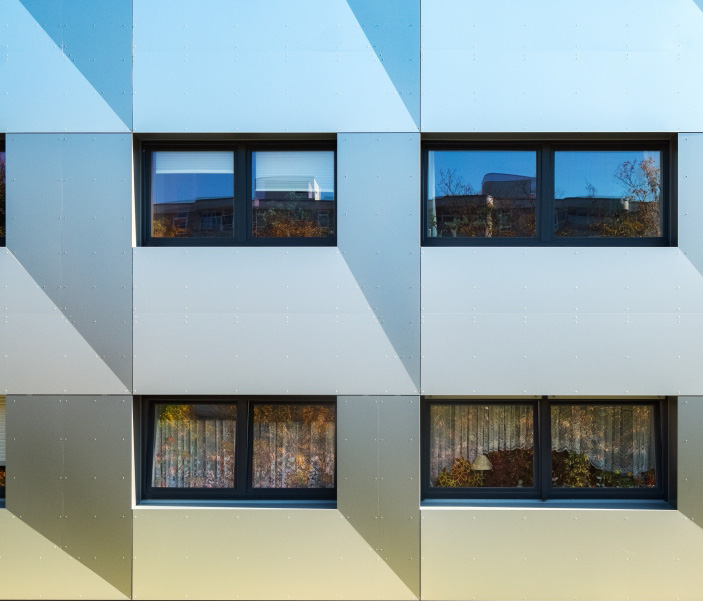Highrise Stieglitzweg
Gropius’ problem district transferred to the modern age
Sustainable complete renovation of a 14-storey residential building.
The facade, as an essential part of the building envelope, fulfills not only the design but also ecological, economic and social functions. Energy efficiency is an essential prerequisite for achieving the climate protection goals in Germany. GEHAG / Deutsche Wohnen AG is currently setting a good example: they refurbished the first residential high-rises in Berlin’s Gropiusstadt in terms of energy efficiency and visually upgraded it with a contemporary facade design. In the background, the substructure, which minimizes thermal bridges, consists of “L” -shaped stainless steel wall brackets and the ALWI-S profile system from SYSTEA for energetic protection at passive house level and economical installation.
There may be different opinions on living in high-rise buildings and large housing estates. In particular, Gropiusstadt in Berlin Neukölln, which emerged in the 1960s, has long been considered a social hotspot. Architect and Bauhaus founder Walter Gropius planned the satellite town with around 18,500 apartments, 90 percent of which were built as social housing. Gropiusstadt has been becoming increasingly attractive again for several years. The vacancy rate is in the single digits. There is a lively neighborhood in many houses and floors. In addition, the apartments are flooded with light through the large window fronts and often offer a sensational view of Berlin on the upper floors.
Striking appearance
From 2016 to 2018, Blumers Architects completely renovated the 14-story high-rise residential building in Stieglitzweg. The task comprised the line renovation of all 84 apartments, the redesign of the entrance area, the corridors and stairwells as well as the facade renovation – which brings the building into the modern age and serves as a model for the entire estate. For the rear-ventilated facaed, the planners developed a strong design concept with a striking appearance:
Abstracted city plans translated into graphic patterns are applied to the Alucobond facade panels. These alternate excitingly with silver-colored facade elements.
Thermal bridge free substructure
In order to meet the requirements for a highly efficient facade design, the planners chose a proven, thermal bridge minimized substructure system from SYSTEA, consisting of passive house-certified, L-shaped wall brackets made of stainless steel and the ALWI-S profile system. Horizontal hat and Z-profiles were mounted on top so that the façade elements, some of which were cut diagonally, could be attached simply and economically with rivets. Thanks to their patented geometry, the stainless steel L-wall brackets have a low dead weight and, if necessary, can also easily support facades with high loads. In addition, the wall brackets are equipped with an assembly aid that makes it easier to hold and fix the support profile. In order to minimize the thermal bridges, Thermostop elements were used as thermal separation – the result is a high-quality and economical facade, which thanks to the SYSTEA substructure is also sustainable and future-oriented.
Project details
- Project: Highrise Stieglitzweg
- Place: Berlin
- Country: DE
- Building type: Residential
- Type of construction project: Renovation
- Completion: 2017
- SYSTEA wall bracket Stainless steel
- SYSTEA profile system: ALWI-S with horizonatl hat and Z-profile
- Cladding material: Alucobond ACM panels
- Fixing: visible
- Installer: Henke AG
- Architect: Blumers Arch. Generalplaner und Baumanagement, Berlin
- Photos: Henke AG, Hagen
If you wished further information, please contact us.

